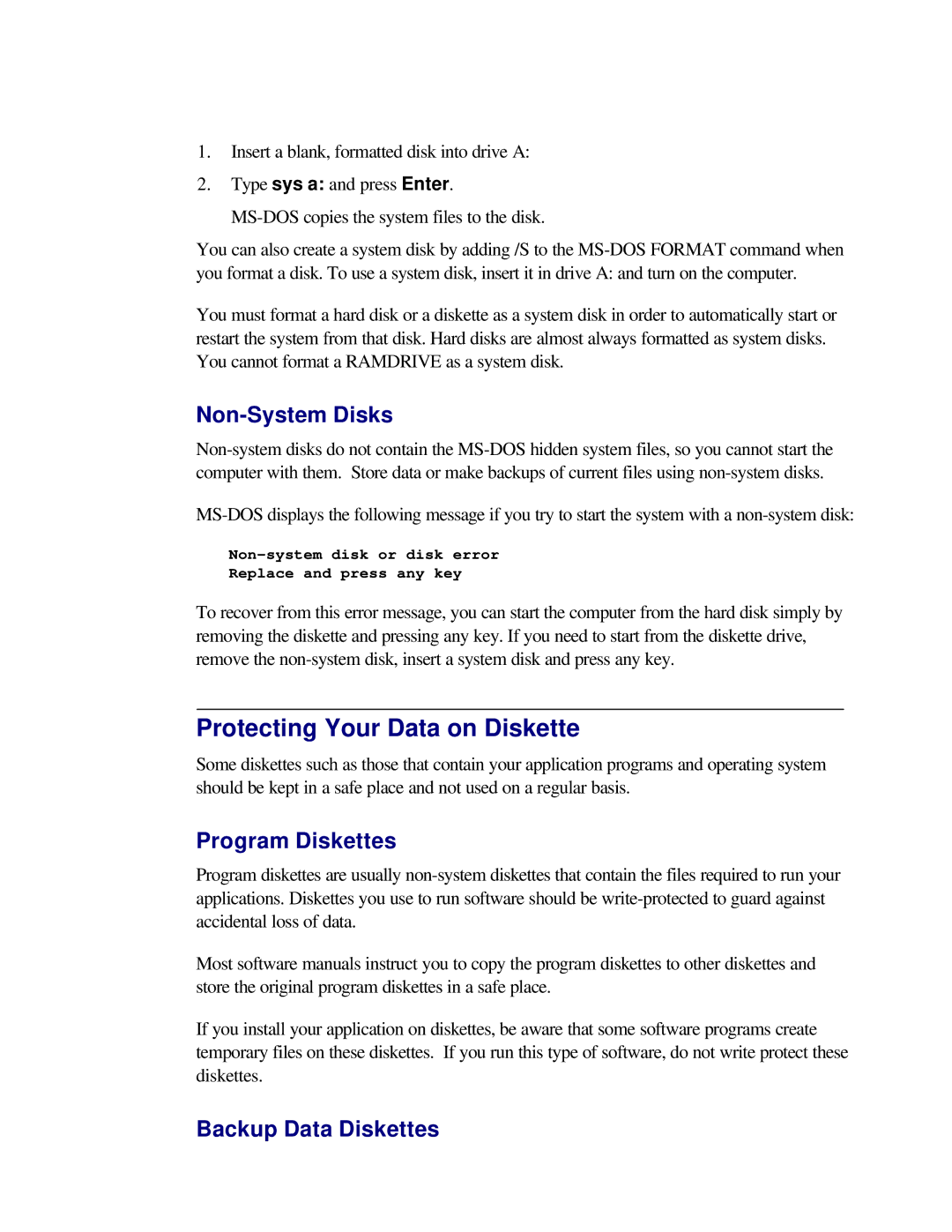1.Insert a blank, formatted disk into drive A:
2.Type sys a: and press Enter.
You can also create a system disk by adding /S to the
You must format a hard disk or a diskette as a system disk in order to automatically start or restart the system from that disk. Hard disks are almost always formatted as system disks. You cannot format a RAMDRIVE as a system disk.
Non-System Disks
Replace and press any key
To recover from this error message, you can start the computer from the hard disk simply by removing the diskette and pressing any key. If you need to start from the diskette drive, remove the
Protecting Your Data on Diskette
Some diskettes such as those that contain your application programs and operating system should be kept in a safe place and not used on a regular basis.
Program Diskettes
Program diskettes are usually
Most software manuals instruct you to copy the program diskettes to other diskettes and store the original program diskettes in a safe place.
If you install your application on diskettes, be aware that some software programs create temporary files on these diskettes. If you run this type of software, do not write protect these diskettes.
